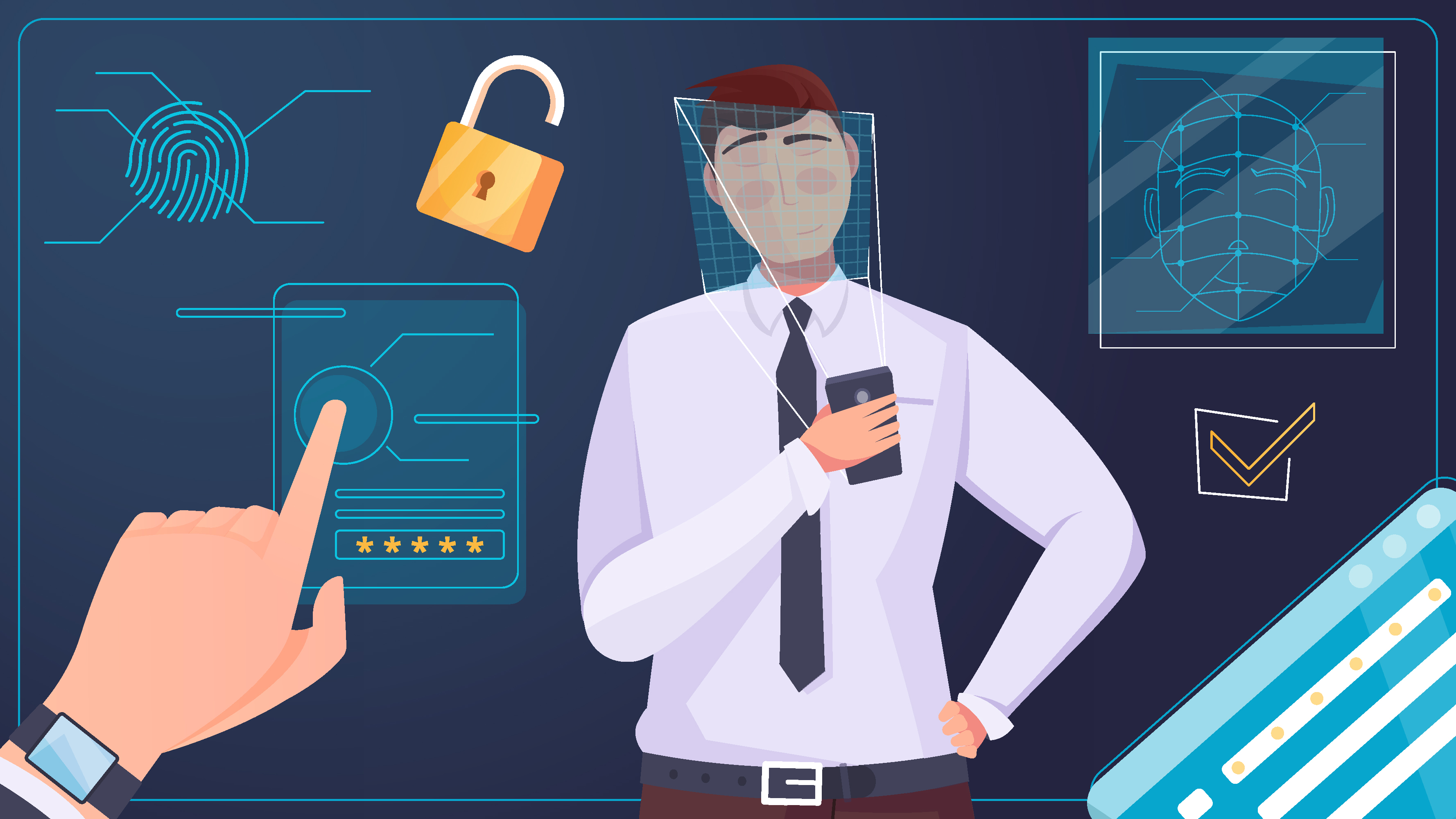
by Rebeca | Apr 12, 2023 | Customer, cybersecurity, Resources, soffid
Identity and Access Management (IAM) is a set of processes and technologies used to manage and protect an organization’s data and resources. IAM is a fundamental component of information security and is essential for protecting customer, employee, and business partner data.
We are talking about a systematic approach to managing user identities and access to organizational resources. This includes identifying and authenticating users, authorizing users to access resources, managing user accounts, and monitoring user access.
Why are good management and strategy so important?
Identity and Access Management is particularly important in an environment where organizations face increasingly sophisticated threats. Cybercriminals can use a bunch of techniques to gain unauthorized access to information systems.
Therefore, a good IAM strategy includes password management, multi-factor authentication, and privilege management. Password management is specially important, as weak or compromised passwords are one of the primary ways that cybercriminals can gain unauthorized access.
A solid IAM approach also aids in adhering to statutory and regulatory standards. Organizations must take steps to guarantee that only individuals with the proper authorization have access to private information in order to comply with laws and regulations relating to data privacy and the protection of personal information.
By following these guidelines, you can avoid penalties and punishments by implementing an IAM strategy.
In conclusion, Identity and Access Management is crucial for safeguarding the information and assets of a business. An organization may safeguard against uninvited assaults and ensure that only authorized people have access to the resources and data they need to carry out their duties by developing and implementing an effective IAM policy.
Furthermore, this can improve the efficiency and productivity of employees, as well as enhance the trust and reputation of the company in the eyes of its customers.
Soffid provides all the services needed to implement a successful IAM implementation, ensuring the system meets all stability, scalability and performance requirements.
Let’s talk

by Rebeca | Mar 1, 2023 | soffid
Cyber attacks are a growing concern for businesses of all sizes, as hackers seek to exploit vulnerabilities in information systems and steal sensitive data. In the face of these threats, it is critical for organizations to take a proactive approach to security, including the implementation of effective Identity Governance Administration (IGA).
IGA is the process of defining and enforcing policies and procedures for managing user access to systems and data, including the management of user identities, roles, and permissions. This process is critical for ensuring that only authorized users have access to sensitive information, and that access is granted and revoked in a timely and controlled manner.
Here are some key ways in which IGA can help protect against cyber attacks:
- Strong authentication methods: By implementing strong authentication methods and password policies, IGA helps to reduce the risk of weak or stolen passwords, which are a common cause of cyber attacks.
- Effective identity management: By managing user identities and permissions, IGA helps to ensure that only authorized users have access to sensitive information, reducing the risk of cyber attacks.
- Reduced risk of data breaches: By controlling access to systems and data, IGA helps to reduce the risk of data breaches and protect sensitive information.
- Compliance with industry standards: By maintaining compliance with industry standards and best practices, IGA helps organizations to reduce the risk of cyber attacks and protect against vulnerabilities.
To ensure the success of your IGA implementation, it is important to take a strategic approach and follow best practices. This may include establishing a cross-functional team, conducting a risk assessment, choosing the right technology, providing employee training, and monitoring and evaluating performance.
At Soffid, we have a deep understanding of Identity Governance Administration (IGA) and can help you implement an effective and secure IAM system for your business. Contact us today to learn more and protect against cyber attacks.
Shall we talk?
Image by Markus Spiske in Pixabay

by Rebeca | Sep 21, 2022 | cybersecurity, Definitions, Resources
Identity and Access Management (IAM) helps ensure that only authorized people have access. No one else, have access to the technology resources they need to do their jobs.
Due to the COVID-19 pandemic, many companies have grown uncontrollably. So no longer have enough time and resources to control and manage the access that each user should have to carry out their daily activities. This has created gaps in security that can be disastrous for companies.
This is why managing the life cycle of identities is so important. Since it allows establishing an identity governance model focused on the needs of each company. Likewise, being able to automatically manage tasks such as the creation, deletion, modification and auditing of users. All in the respective applications used in companies.
Why is so important IAM?
Today, nearly 100% of advanced attacks rely on exploiting privileged credentials to reach a target’s most sensitive data and applications. If abused, privileged access has the power to disrupt your business. In the face of these modern threats, it is clear that identity has become the new security battlefield. An “assume breach” mindset, based on Zero Trust principles, is absolutely essential. But while cyberattacks are inevitable, the negative business impact is not.
Keep your company safe with the help of a Security and Identity Management strategy
Organizations that apply identity management avoid vulnerabilities derived from improper access by users or the appearance of orphan accounts, among others; that, in short, allow access to the organization’s systems by users who should no longer be able to do so for different reasons. A good identity security strategy is based on the principle of least privilege, whereby users are given only the minimum levels of access necessary to perform their job functions.
The principle of least privilege is generally considered a cybersecurity best practice and is a critical step in protecting privileged access to high-value data and assets.
key benefits of identity management for businesses
Identity access and management is useful in many ways, because it helps you ensure regulatory compliance, promotes cost savings and simplifies the lives of your users, due to the improvement of their experience. These are the main benefits of having an IAM solution:
- Easy access anywhere
- It favors the connection between the different parts
- Improve productivity
- Optimize User Experience
Do you want to keep your company safe?
Picture: Imagen de Freepik

by Rebeca | Mar 16, 2022 | cybersecurity, News, soffid
Cyber resilience refers to the ability to protect electronic data and systems from cyberattacks. As well as to quickly resume business operations in the event of a successful attack. According to Statista, 37% of organisations globally became a victim to a ransomware attack in 2021. Additionally, 68.5% were victimised by ransomware – an increase on the previous three years.
Companies now must find intelligent ways of reducing digital footprints across cybersecurity quicksand to ensure their environments are secure. Cyberattacks are a serious threat to each of us. Because attackers could try to hack into a private computer or an organisation for economic gain or simply for demonstrative purposes. Generally their goals are simply to cause harm and disruption.
This threat has to be taken seriously by banks, financial institutions, and financial market infrastructures (such as payment or settlement systems). But cyberattacks are not only a threat to individual institutions. Given the high level of interconnectedness within the financial sector, they can also pose a threat to the stability of the overall financial ecosystem.
The Australian Securities & Investments Commission share some Cyber resilience good practices.
In an increasingly digitized world where cyberattacks are growing at an alarming rate, it is hard to imagine running a business without a comprehensive cyber resilience strategy. With the shift towards hybrid work, cyberattacks are an unfortunate reality for businesses of all shapes and sizes. Attacks leveraging social engineering and other techniques are increasingly effective, which means no organization is safe.
A solid program enables you to prepare for and effectively respond to and recover from such attacks. A cyber-resilient organization can protect its core business functions against cyberattacks and ensure business continuity during and after a disruptive incident.
Do We Need a Cyber Resilience strategy?
Cyber resilience is highly beneficial for your organization. By improving the overall security of the company, it is protected from serious harm such as financial loss, loss of sensitive data and cyber attacks. Additionally, it helps protect your brand reputation by enabling you to efficiently manage cyber risks. It helps improve your organization’s corporate culture and business processes, thereby reducing risk and enhancing security in the process.
A cyber resilience plan helps you comply with complex legal and regulatory requirements. This technique minimizes business interruptions and downtime. At the same time, it allows business operations to continue during and after an incident. When put into practice, any cyber resilience strategy must require a preventive measure. In this way, the effect of human errors, software vulnerabilities or incomplete or poorly executed configurations is prevented.
Therefore, the goal is to protect the organization. No matter how strong the security controls are, there will be insecure parts.
How Can Cyber Resilience Be Improved?
Here are four methods that you can use to strengthen your organization’s cyber resilience:
- Automation.
- Implement Stringent Security Protocols.
- Make Cyber Resilience a Part of Your Corporate Culture.
- Back Up Your Data.
Sources:
(1) asic.gov.au
(2) spanning.com
(3) itgovernance.eu

by Rebeca | Mar 9, 2022 | cybersecurity, Resources, soffid
Every company must face the new cybersecurity challenges and for this there is a new approach. “Developing a fully integrated strategic approach to cyber risk is fundamental to manufacturing value chains as they align with the operational technology (OT) and IT environments—the driving force behind Industry 4.0“, Deloitte said recently.
With the advent of Industry 4.0, threat vectors are expanding. That is why new risks must be considered and addressed. The main objective will be to implement a safe, vigilant and resilient cyber risk strategy. When supply chains, factories, customers, and operations are connected, the risks of cyber threats increase. The risks are enhanced and have a greater scope, he added.
Adopting new approaches and challenging conventional thinking is essential in an increasingly digitized world. “In terms of security, if we’re not moving forwards and developing, then we are effectively going backwards because our adversaries will definitely be moving forward,” commented Johnson (partnerships and outreach manager (digital and STEM), founder and director of Women in Cyber Wales)
Technology change has been beneficial to both organizations and its employees. The adoption of technological innovations by organizations has skyrocketed in recent decades. increase global spending on technology across all industries.
The adoption of new technologies brings many benefits to the company. At the same time it comes with risks and free threats. The new technology must fit perfectly into the business. If the right fit is not ensured the sustenance will be at large risk.
The adoption of new technologies to overcome cybersecurity challenges
New technology while adopting create internal conflict in an organization. They are such as managerial, Technological, sociological and economic related. There are several attributes of conflicts and they are usability, interoperability, common business views, agility, scalability, reliability, openness, manageability, infrastructure and security. Here Security assumes major role.
With data breaches continuing to pose a threat to any emerging technology, it’s critical to think about a good investment in cybersecurity. The increase in technology exists in any type of business, from health care, finance, manufacturing, services or any other. In order for these companies to be able to exploit them efficiently and prosper, they must put into practice cybersecurity policies and practices.
It is necessary to adequately analyze the security risks of the technology that will be implemented. In addition, before institutionalizing technologies, effective strategies must be implemented.
Why Security Standards Are Important
Conformance with established standards and best practices is essential for increasing the protection baseline in cybersecurity. Many organisations lack personnel experienced in the domain and, therefore, have a hard time adopting new approaches and techniques. Education is an important component, but in-depth knowledge is hard to transfer.
Thus, certification methodologies that distil certain best practices into structured, easy-to-apply guidelines have an important role in the proliferation of cybersecurity innovation.
The Evolution of Threat Hunting
Threat hunting continues to evolve for organizations that focus on proactively detecting and isolating Advanced Persistent Threats (APTs) that might otherwise go undetected by traditional, reactive security technologies.
While many SOCs are struggling to cope with the current security threat workload, more organizations are adopting threat hunting as part of their security operations. They are discovering that proactive threat hunting can reduce the risk and impact of threats while improving defenses against new attacks.
Source:
(1) cyber-security.com
(2) cio.com
(3) Deloitte.com
(4) cybersec4europe.eu
Picture: Vector de Fondo creado por pikisuperstar – www.freepik.es






